Introduction

Delving into ancient folklore can provide us with fascinating insights into the beliefs and customs of different cultures. From Ancient Egypt to Norse mythology, cats have held a special place in various societies around the world, often being associated with divinity, mischievousness, and even witchcraft. By exploring these cat myths, we gain a deeper understanding of the historical and cultural significance attached to these mysterious creatures.
In Ancient Egypt, cats reigned as sacred beings and were revered as symbols of divinity. They were believed to possess supernatural powers and were even worshipped as gods. The Norse mythology introduces us to the mischievous companion of the goddess Freyja – the cat – who played a significant role in their legends. Japanese superstitions highlight the charm of the Beckoning Cat or Maneki-neko, which is said to bring good luck and prosperity. And in British folklore, black cats became associated with witches and were considered both omens of good fortune and bearers of bad luck.
Understanding these diverse cat myths allows us to unravel the truths behind common misconceptions about cats while embracing the cultural significance attached to them. Let's embark on this journey through feline folklore as we explore the captivating tales that span across different corners of our world.
Overview of cat myths in different cultures

Cats have held a significant place in the folklore and myths of cultures around the world. From Ancient Egypt to Norse mythology, cats have been depicted as divine beings, mischievous companions, and witchy familiars.
In Ancient Egypt, cats were considered sacred and worshipped as symbols of divinity. They were believed to possess supernatural powers and were even mummified alongside their human counterparts. The Norse mythology introduced us to Freyja, the goddess of love and beauty, who had a strong connection with cats. It was said that she rode in a chariot pulled by two large cats.
Japanese folklore features the Beckoning Cat or Maneki-neko, which is believed to bring good luck and fortune to its owners. These cats are often depicted with one paw raised in a beckoning gesture. The British folklore associates black cats with witches and magic. While they were seen as omens of both good and bad luck, they were commonly feared during witch-hunting times.
Understanding these diverse cat myths provides insight into different cultural beliefs and customs surrounding these mysterious creatures. It also helps debunk common misconceptions about cats while appreciating the historical and cultural significance attached to them.
Importance of understanding cat folklore
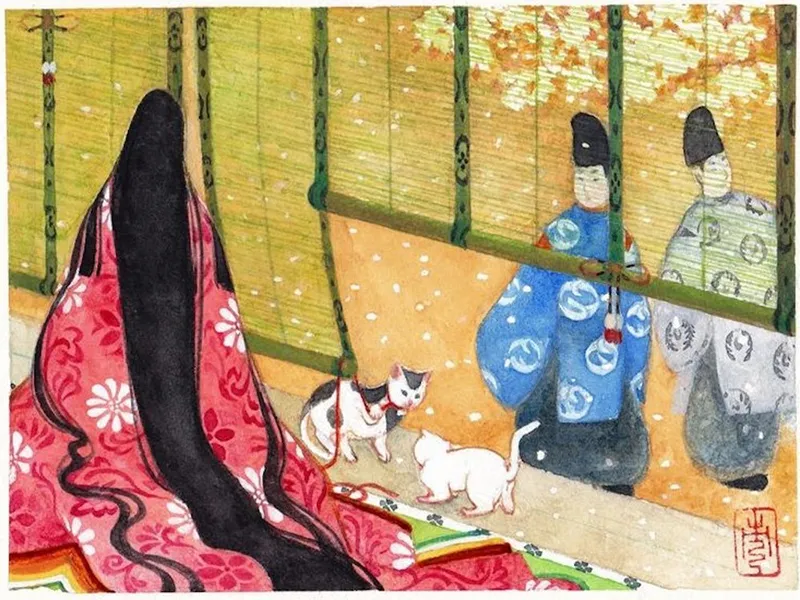
Understanding cat folklore is important as it allows us to delve into the rich and diverse cultural beliefs surrounding these mysterious creatures. Cat myths provide a window into different societies' perception of cats and their role in human history.
By exploring cat folklore, we gain insights into the deep connection between cats and humans throughout time. For example, in Ancient Egypt, cats were regarded as sacred beings and worshiped as divine symbols. This understanding helps us appreciate the significant role cats played in ancient Egyptian society.
Furthermore, cat folklore helps debunk common misconceptions about cats. For instance, the association between black cats and witches in British folklore has led to superstitions and negative stereotypes. By understanding the historical context behind these beliefs, we can challenge these misconceptions and foster a more accurate understanding of cats.
Moreover, studying cat myths allows for cross-cultural comparisons. We can see similarities and differences between various cultures' views on cats, highlighting the universal fascination with these enigmatic creatures.
In conclusion, understanding cat folklore provides valuable cultural insights, challenges misconceptions, and fosters appreciation for the historical significance attached to cats. It broadens our perspective on these animals' place in human culture throughout history.
Ancient Egypt: Sacred Cats of the Pharaohs
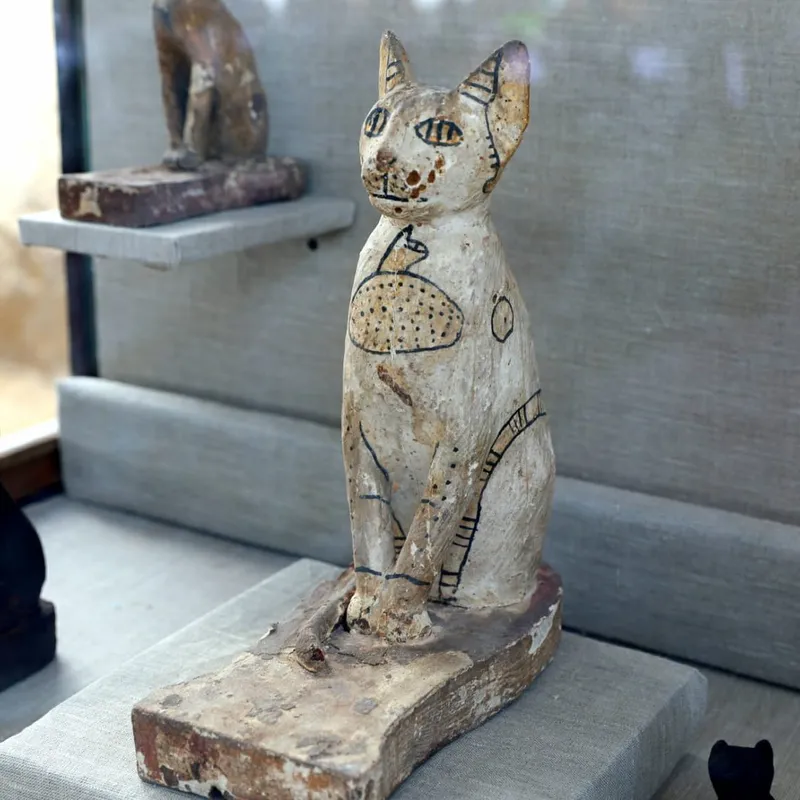
In Ancient Egypt, cats held a revered and sacred status among the Pharaohs and the Egyptian people. These mysterious creatures were seen as symbols of divinity and were worshiped accordingly. The ancient Egyptians believed that cats possessed an inherent connection to the divine realm and considered them to be protective entities.
Cats were often depicted in Egyptian art, including elaborate cat statues and jewelry. They were associated with the goddess Bastet, who was known as the goddess of protection, fertility, and motherhood. Ancient Egyptians believed that keeping a cat in their home would bring good fortune and ward off evil spirits.
The reverence for cats extended beyond their perceived mystical qualities. They were also valued for their practical abilities in controlling vermin, such as rats and snakes, which threatened food supplies and the safety of dwellings.
Understanding the significance of cats in Ancient Egypt allows us to appreciate their integral role in shaping this civilization's cultural narrative. Their presence not only symbolized protection but also showcased the deep spiritual beliefs held by the ancient Egyptians. By studying this aspect of cat folklore, we gain insight into the profound connections between humans and these enigmatic creatures throughout history.
Cats as symbols of divinity in Ancient Egypt

In Ancient Egypt, cats held a revered and sacred status. They were seen as symbols of divinity and were worshipped accordingly. The ancient Egyptians believed that cats possessed an inherent connection to the divine realm, making them supernatural beings. As such, they were associated with the goddess Bastet.
Bastet, also known as the goddess of protection, fertility, and motherhood, was often depicted as a lioness or as a woman with the head of a lioness or a domestic cat. Cats were considered to be her earthly representatives or manifestations.
The presence of cats in Egyptian art was prolific. Elaborate cat statues and jewelry can be found throughout ancient Egyptian artifacts, showcasing their important role in society. Cat mummies have also been discovered in large numbers, demonstrating the reverence and care bestowed upon these animals.
Ancient Egyptians believed that keeping a cat in their home would bring good fortune and ward off evil spirits. This belief stemmed from the idea that cats had protective qualities and could guard their homes against harm.
By understanding the significance of cats in Ancient Egypt as symbols of divinity, we gain insight into the deep spiritual beliefs held by this civilization. Cats not only represented protection but also played an integral role in shaping Egyptian cultural narratives.
Beliefs and rituals surrounding Egyptian cats

Ancient Egyptians held strong beliefs and performed various rituals surrounding their sacred cats. These feline companions were seen as more than just household pets; they were regarded as divine beings.
Cats were believed to possess supernatural powers and a unique connection to the divine realm. As such, they were often adorned with jewelry and treated with utmost care and reverence. When a cat passed away, it was mummified and given a proper burial, similar to that of a human.
The Egyptian people also had specific rituals centered around their beloved cats. For example, during the annual festival dedicated to the goddess Bastet, large processions would take place in her honor, where cats were prominently featured. These processions included offerings of food and drink for both the goddess and her earthly manifestations.
Furthermore, cats played a role in Egyptian households beyond their spiritual significance. They were seen as protectors against evil spirits and bringers of good fortune. It was not uncommon for families to keep multiple cats in their homes to ensure protection and prosperity.
Overall, the beliefs and rituals surrounding Egyptian cats reveal the deep spiritual connection that Ancient Egyptians had with these revered animals. Their presence permeated all aspects of Egyptian life, making them an integral part of the culture and religious practices of this ancient civilization.
Norse Mythology: The Mischievous Freyja's Companions
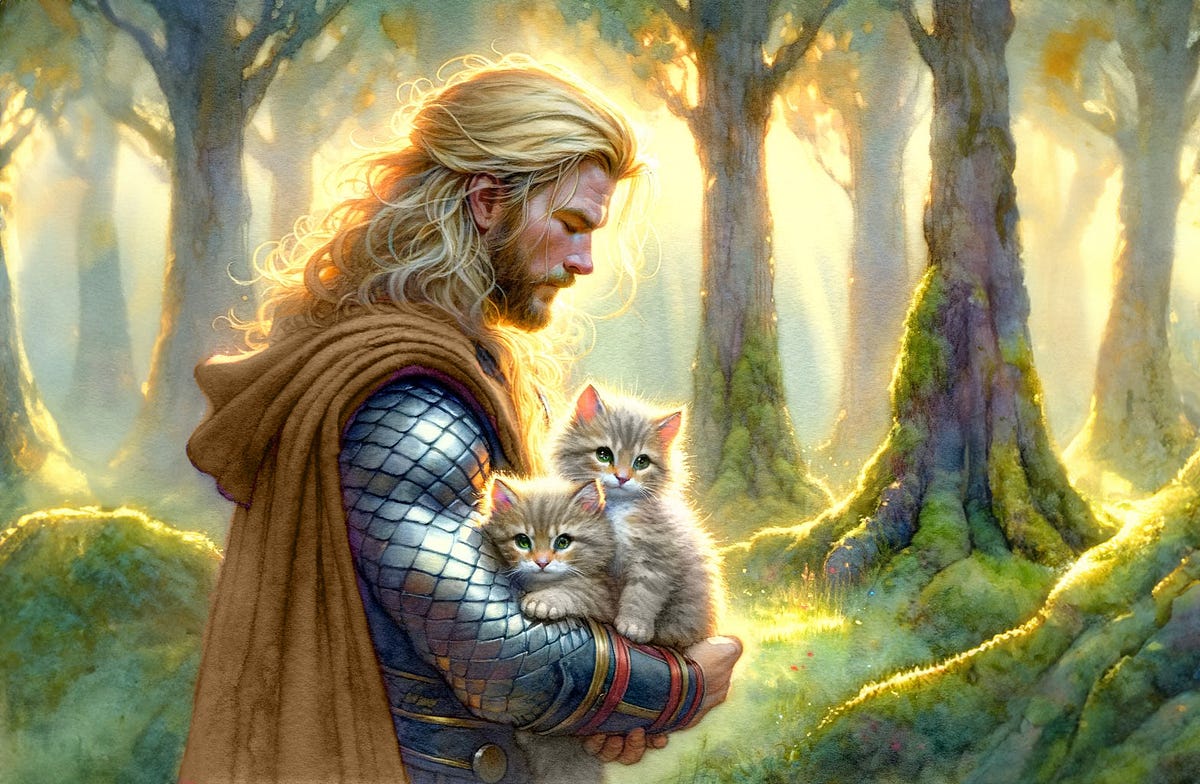
In Norse mythology, the goddess Freyja is often associated with cats. These feline companions were said to be a symbol of her affection and protection. Cats were believed to possess a mischievous nature, much like Freyja herself.
According to legend, Freyja had two large cats that pulled her chariot across the sky. These cats were known for their agility and strength. They were said to sparkle with golden fur, adding to their mystique and allure.
In Norse mythology, cats were seen as guardians and protectors. They were believed to ward off evil spirits and bring good fortune. As such, it was not uncommon for households to keep cats as pets or companions in hopes of receiving Freyja's blessings.
Cats in Norse mythology also played a role in fertility and love. Freyja was considered to be the goddess of love and beauty, and her association with cats further emphasized these aspects of her divinity.
Overall, the connection between Freyja and cats in Norse mythology showcases the significance of feline companionship in ancient Scandinavian cultures. The mischievous nature and protective qualities attributed to these animals reflect the complex beliefs surrounding the divine influence of cats in Norse folklore.
The association between cats and the Norse goddess Freyja

In Norse mythology, the goddess Freyja had a strong association with cats. She was often depicted with two large cats that pulled her chariot across the sky. These feline companions were not just ordinary animals; they were seen as symbols of Freyja's affection and protection.
Legend has it that these cats possessed extraordinary agility and strength, and their golden fur sparkled, adding to their allure. In Norse mythology, cats were considered guardians and protectors, warding off evil spirits and bringing good fortune. As a goddess of love and beauty, Freyja's connection with cats further emphasized these aspects of her divinity.
Cats held a significant role in ancient Scandinavian cultures, and keeping them as pets or companions was believed to invite blessings from Freyja herself. Their mischievous nature mirrored that of the goddess herself, making them an ideal symbol for her.
The association between Freyja and cats in Norse mythology highlights the importance of feline companionship in ancient Norse society. The beliefs surrounding the divine influence of cats reflect their revered position in Norse folklore.
Cat-related legends and beliefs in Norse mythology

In Norse mythology, cats held a significant place in the ancient Scandinavian cultures. They were believed to possess magical qualities and were associated with the goddess Freyja, who was seen as the embodiment of love and beauty.
One famous legend involving cats is the story of how Thor, the Norse god of thunder, lost his hammer. As the tale goes, a giant stole Thor's hammer and demanded Freyja's hand in marriage in exchange for its return. Freyja refused, but Loki, another deity known for his cunning, suggested that Thor should dress up as a bride and accompany him to retrieve the hammer. To complete their disguise, Loki brought two large cats for them to ride on.
This legend showcases both the mischievous nature of cats and their association with Freyja. Cats were seen as protectors and guardians against evil spirits, making them appropriate symbols for the goddess of love. The belief in cats' ability to ward off evil and bring good fortune further solidified their divinity in Norse folklore.
Throughout Norse mythology, cats remain a prominent symbol associated with Freyja and her attributes. Their presence not only adds depth to these legends but also emphasizes the importance of feline companionship in Norse society.
Japanese Superstitions: The Beckoning Cat
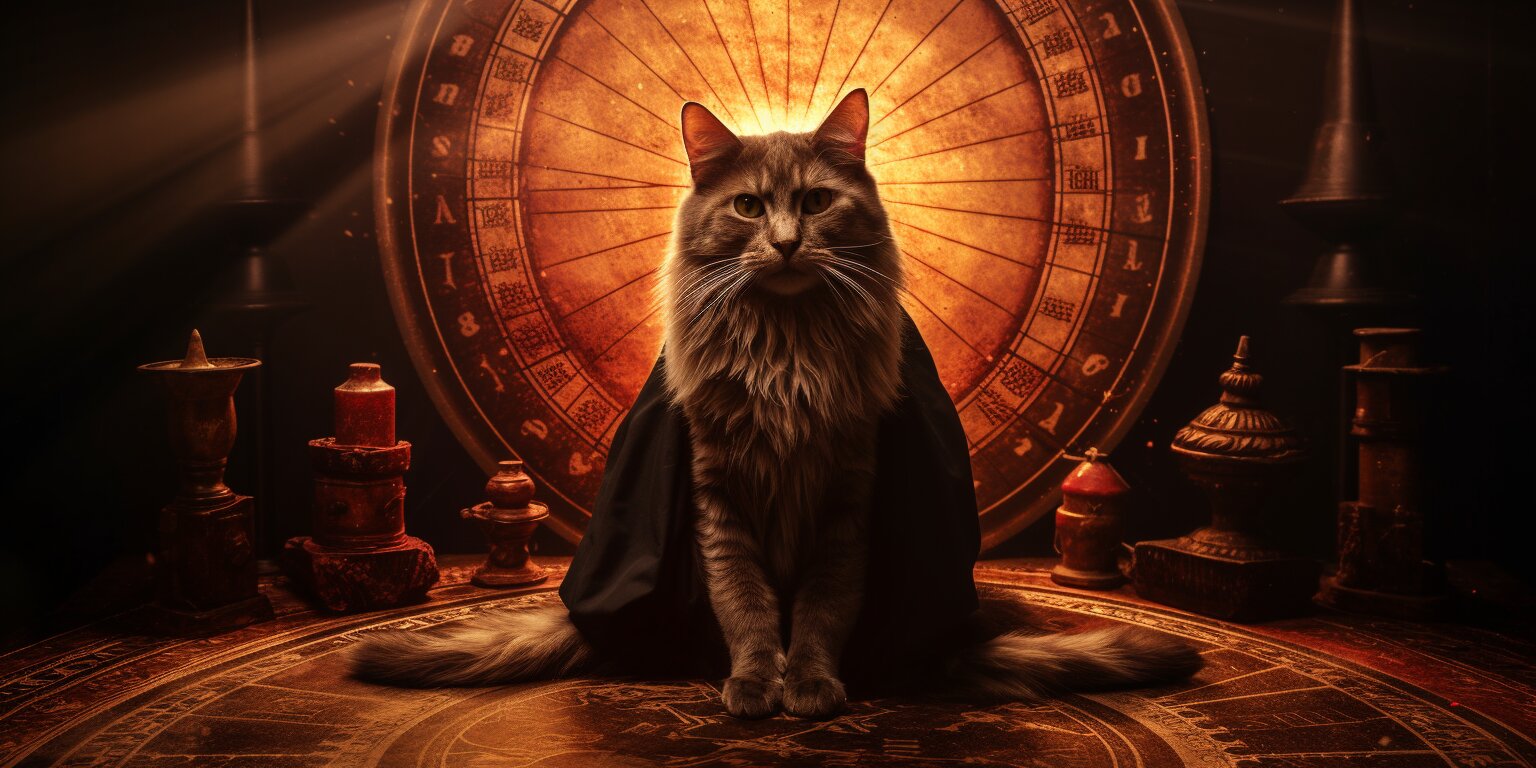
In Japanese folklore, the Maneki-neko, also known as the Beckoning Cat, holds a special place in superstitions and beliefs. This iconic figurine is often seen with one paw raised in a beckoning gesture, inviting good luck and fortune into people's lives.
The significance of the Maneki-neko lies in its association with wealth and prosperity. It is believed that by displaying this cat figurine in homes or businesses, it can attract money and success. The color of the cat also holds meaning, with gold symbolizing financial abundance and black representing protection against evil spirits.
Popular beliefs surrounding the Maneki-neko include its ability to bring good fortune, business success, and protection from misfortune. Some people believe that if the left paw is raised, it attracts customers or guests, while a raised right paw invites money and wealth.
Various customs are associated with the Maneki-neko as well. For example, visitors to shrines or temples may purchase wooden plaques shaped like cats and write their wishes on them before hanging them up. It is also common for people to give Maneki-neko statues as gifts to wish others luck and prosperity.
The Beckoning Cat is not only a charming icon but also an integral part of Japanese culture that represents optimism and the belief in attracting positive energy into one’s life through symbolism.
The significance of the Maneki-neko or Beckoning Cat

The Maneki-neko, also known as the Beckoning Cat, holds great significance in Japanese culture. This iconic figurine with its raised paw is believed to invite good luck and fortune into people's lives. The Beckoning Cat symbolizes wealth and prosperity, making it a popular item to display in homes and businesses.
The color of the Maneki-neko also carries meaning. A golden cat represents financial abundance, while a black cat provides protection against evil spirits.
Many believe that by having a Maneki-neko with its left paw raised, it can attract customers or guests to businesses. Conversely, a raised right paw is believed to invite money and wealth.
Customs surrounding the Maneki-neko are also prevalent in Japanese culture. People often purchase wooden plaques shaped like cats and write their wishes on them before hanging them up at shrines or temples. Additionally, giving someone a Maneki-neko statue as a gift is a common practice to wish them luck and prosperity.
Overall, the symbolic representation of the Maneki-neko showcases optimism and the belief in attracting positive energy into one's life. It remains an integral part of Japanese superstitions and traditions associated with good fortune and success.
Popular beliefs and customs surrounding the Maneki-neko
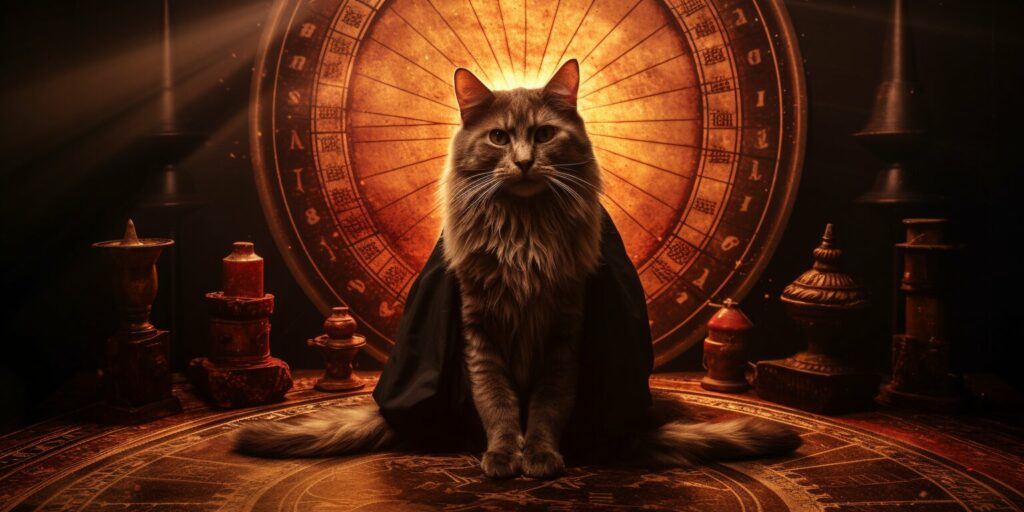
The Maneki-neko, also known as the Beckoning Cat, holds great significance in Japanese culture. This iconic figurine with its raised paw is believed to invite good luck and fortune into people's lives. The Beckoning Cat symbolizes wealth and prosperity, making it a popular item to display in homes and businesses.
The color of the Maneki-neko also carries meaning. A golden cat represents financial abundance, while a black cat provides protection against evil spirits.
Many believe that by having a Maneki-neko with its left paw raised, it can attract customers or guests to businesses. Conversely, a raised right paw is believed to invite money and wealth.
Customs surrounding the Maneki-neko are also prevalent in Japanese culture. People often purchase wooden plaques shaped like cats and write their wishes on them before hanging them up at shrines or temples. Additionally, giving someone a Maneki-neko statue as a gift is a common practice to wish them luck and prosperity.
Overall, the symbolic representation of the Maneki-neko showcases optimism and the belief in attracting positive energy into one's life. It remains an integral part of Japanese superstitions and traditions associated with good fortune and success.
British Folklore: Witches' Familiars and Black Cats

In British folklore, black cats have long been associated with witchcraft and superstition. They are believed to be the familiars, or companions, of witches. The connection between witches and black cats dates back to ancient times when people believed that witches could transform into cats.
Black cats were seen as magical creatures possessing mystical powers. It was believed that they aided witches in their spells and rituals. This association led to widespread fear and suspicion towards both witches and black cats during the Middle Ages.
Superstitions surrounding black cats also prevailed in British folklore. It was believed that if a black cat crossed your path, it would bring bad luck. Conversely, some believed that if a black cat entered your home, it would bring good fortune.
These beliefs influenced popular culture, literature, and even legal proceedings during the witch trials of the 16th and 17th centuries. Unfortunately, countless innocent cats were persecuted and killed as a result of these superstitious beliefs.
Today, while many no longer hold such beliefs about black cats, the association between witches and their familiars still lingers in our cultural consciousness. Black cats continue to be seen as mysterious creatures embodying magic and intrigue in British folklore.
The connection between witches and black cats
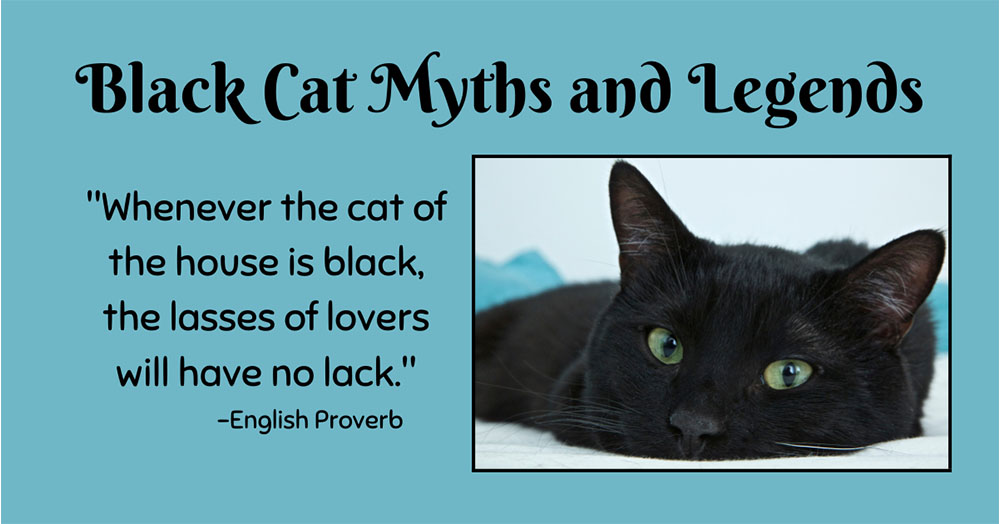
In British folklore, there is a long-standing association between witches and black cats. During ancient times, it was believed that witches had the ability to transform into cats, specifically black ones. These black cats were seen as their familiars or companions, aiding them in their magical practices.
The connection between witches and black cats stems from the belief in their shared supernatural powers. Black cats were considered to be mystical creatures with their own magical abilities. They were thought to assist witches in casting spells and performing rituals, enhancing the witches' powers.
This association between witches and black cats led to widespread fear and suspicion during the Middle Ages. People viewed black cats as symbols of witchcraft and bad omens. Crossing paths with a black cat was believed to bring misfortune.
Although these superstitions have diminished over time, the connection between witches and black cats still persists in popular culture and folklore today. They continue to be portrayed as mysterious beings with an air of magic and intrigue.
It's important to note that these beliefs are rooted in folklore and should not be taken literally. Cats, regardless of their color, are simply animals with no inherent connection to witchcraft or evil forces.
Superstitions and legends surrounding black cats in Britain
:max_bytes(150000):strip_icc()/BlackCat_1500-56a6df835f9b58b7d0e53405.jpg)
Superstitions and legends surrounding black cats have been deeply ingrained in British folklore for centuries. In Britain, black cats have often been associated with supernatural powers and considered both omens of good or bad luck, depending on the context.
One prevalent belief is that if a black cat crosses your path, it is a sign of impending misfortune. This superstition dates back to the Middle Ages when black cats were viewed as companions of witches and partners in their malevolent practices. The fear of crossing paths with a black cat became so engrained that even today, many people still hold onto this superstitious belief.
On the other hand, there are also positive legends surrounding black cats in Britain. In some regions, it is believed that if a black cat enters your home, it brings prosperity and good fortune. Sailors, in particular, consider encountering a black cat before setting sail as a fortunate omen that ensures a safe journey.
These superstitions and legends surrounding black cats in Britain showcase the enduring influence of folklore on people's beliefs and perceptions. However, it is important to remember that these notions are based on myths rather than reality, as cats are simply animals without any inherent connection to witchcraft or luck.
Conclusion
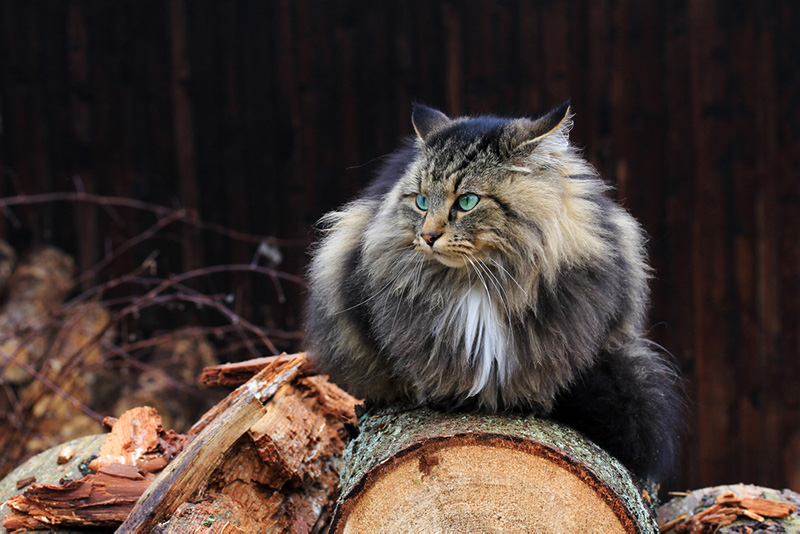
In conclusion, exploring the diverse cat myths from around the world offers a fascinating glimpse into different cultures and their beliefs. From the sacred cats of Ancient Egypt to the mischievous companions of Norse mythology and the beckoning cats of Japan, cats have been revered and associated with various significances throughout history.
Understanding cat folklore is important because it not only provides insights into our ancestors' perspectives but also highlights the enduring power of myths and legends in shaping our beliefs. By unraveling the truths behind common misconceptions about cats, we can dispel superstitions and appreciate these majestic animals for what they truly are.
While ancient civilizations may have attributed supernatural powers or divine qualities to cats, it's crucial to remember that cats are simply animals without any inherent connection to magic or luck. They are beloved companions that bring joy, comfort, and loyalty to our lives.
By embracing a more accurate understanding of cat mythology, we can celebrate the rich cultural heritage and symbolism attached to these magnificent creatures while appreciating them for their unique personalities and remarkable abilities. Let us cherish our furry friends for the loving companions they are, free from unnecessary superstitions.
Exploring the diverse cat myths from around the world

Cats have been the subject of myth and legend in various cultures throughout history. From the sacred cats of Ancient Egypt to the mischievous companions of Norse mythology and the beckoning cats of Japan, these feline creatures have captivated human imagination across continents.
In Ancient Egypt, cats were revered as symbols of divinity. They were associated with the goddess Bastet and believed to bring protection, fertility, and good fortune. Egyptians even mummified their prized feline companions, placing them in elaborate tombs to accompany them into the afterlife.
Norse mythology saw cats as companions of the goddess Freyja. They were seen as both cunning and mysterious creatures with a connection to magic and witchcraft. Legend has it that Freyja could transform herself into a cat to travel through the realms unnoticed.
In Japanese folklore, the Maneki-neko or Beckoning Cat is a common sight. This cat figurine with an upraised paw is said to beckon good luck and fortune to its owner. It is often found in shops and homes as a talisman to invite prosperity.
Black cats have long been associated with superstition and witches in British folklore. It was believed that crossing paths with a black cat would bring bad luck, while owning one could ward off evil spirits.
Understanding these diverse cat myths offers a fascinating glimpse into different cultures and their beliefs. While ancient civilizations may have attributed supernatural powers or divine qualities to cats, it's important to remember that they are simply animals without any inherent connection to magic or luck.
By embracing a more accurate understanding of cat mythology, we can celebrate the rich cultural heritage attached to these magnificent creatures while appreciating them for their unique personalities and remarkable abilities. Let us cherish our furry friends for the loving companions they are, free from unnecessary superstitions.
Unraveling the truths behind common misconceptions about cats

Cats have long been surrounded by a range of misconceptions and superstitions. However, it is essential to separate fact from fiction when it comes to these captivating creatures.
Contrary to popular belief, cats are not inherently connected to magic or luck. They are simply animals with unique characteristics and abilities. In reality, their mysterious nature stems from their agility, keen senses, and independent behavior.
Another common misconception is that black cats bring bad luck. This superstition has led to discrimination against these beautiful felines throughout history. In truth, the color of a cat's fur does not determine its fortune-bringing abilities or lack thereof.
Furthermore, cats do not possess any supernatural powers. While they may exhibit behaviors that seem otherworldly at times—like appearing stealthy or mysteriously disappearing—they are simply utilizing their natural instincts honed through years of evolution.
Understanding these truths about cats allows us to appreciate them for who they truly are: loving companions with incredible adaptability and intelligence. It's time to dispel the myths surrounding cats and embrace them for the amazing pets they can be.




0 Comments